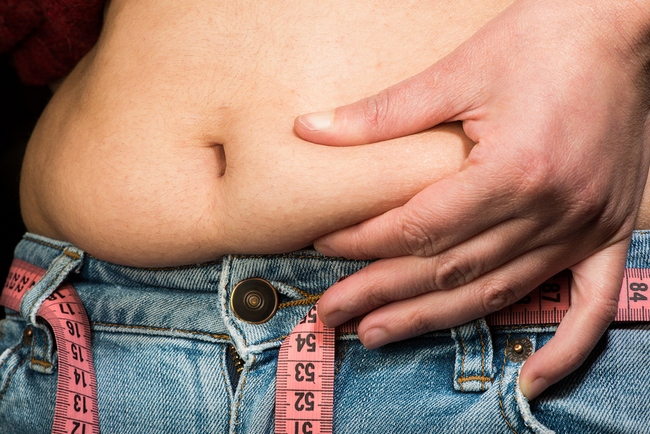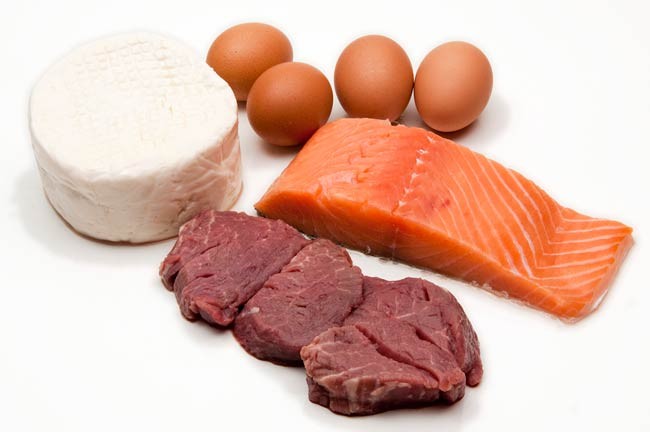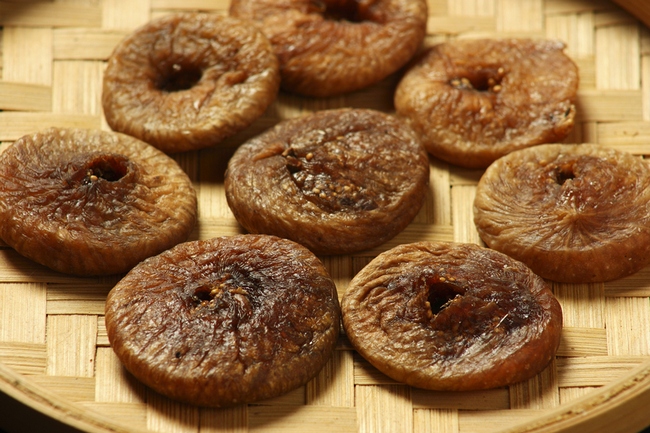- Make It Yourself Lavender Heart-Shaped Bath Bombs!
- 20 Things You Never Knew About “Down There”
- 12 Best Foods For Those Suffering From Arthritis Pain
- 12 Personal Hygiene Mistakes Almost Everyone Makes (Mom Never Told You About #4!)
- 15 Medicinal Plants And Herbs From The Cherokee People
- 12 Mind-Blowing Benefits Of Drinking Coconut Water During Pregnancy
- 12 Outstanding Winter Foods That Won’t Fatten You Up Like A Christmas Turkey
10 Super Effective Ways to Bust Belly Fat

Photo credit: bigstock.com
Although most people think that those who are overweight are unhealthy, this is not necessarily the case. We all know plenty of people who eat right, work out, but still have some excess body fat. On the other hand, we also know people who eat tons of junk food, smoke, drink, and never go to the gym, yet they are thin as a rail. Sometimes, it has more to do with genetics than with lifestyle habits.
It’s not so much the fat that lies underneath the skin that poses a real health problem, but the fat that lies in the abdominal cavity, otherwise known as visceral fat. This fat surrounds our organs and puts us at a much greater risk for heart disease, stroke, diabetes, and even early death.
So it makes sense to take steps to lower your belly fat if you find that you carry most of your weight in your middle. Although we make plenty of jokes about spare tires, they aren’t very funny when you consider that your “spare tire” is churning out stress hormones, inflammatory substances, and setting you up for serious health complications further down the road.
We are going to list the top 10 super effective ways that have been proven to help people reduce their midsection easily and quickly. Keep in mind that you don’t have to do all 10 of these every day and you don’t have to go overboard. Losing just a pound every week will add up very quickly and you will never regret the way you look and feel.
So stick around and keep reading for the best ways to reduce that spare tire and reduce your risk of dying earlier than you need to.
1. Keep Moving
One of the great things about visceral fat (if you want to look on the bright side) is that it tends to give way fairly easily to aerobic exercise. You can literally blow up your belly fat simply by doing anything that gets your heart rate up and running: swimming, brisk walking, running, jogging, tennis, or dancing. Duke University conducted a study which found the best way to get rid of belly fat was jogging but the truth is that any type of exercise will do the trick. Even if you haven’t exercised in years, simply walking 30 minutes or so every day will go a long way towards reducing your middle.
2. Avoid Sugar
Well, this is one we are all too aware of, but it still needs to be repeated. We often think that our one little afternoon soda isn’t really doing us any harm, but it is. Numerous studies have shown that consuming processed sugar, especially the high fructose corn syrup in sodas, leads to an increase in the amount of visceral fat. When we are talking about sugar, we don’t mean the natural kind that is in fruits, but we mean refined sugar such as donuts, candy, sports drinks, sodas, even the table sugar you put in your coffee and tea.
Decide today that you are going to stop eating sugar and that you will start reading labels to be sure that you are not eating hidden sugar in your foods. Simply cutting sugar out of your diet will go a long ways towards reducing the visceral fat in your abdomen.
3. Yoga
You might think of yoga as nothing more than stretching, but it has been shown in numerous studies to have positive effects in many areas of your life. One study showed that when postmenopausal women did yoga daily during the 16 week study period, they had significant reductions in belly fat, even though they did not change their eating habits. How does yoga work? It lowers our body’s production of the stress hormone cortisol, which has been linked to abdominal fat. Yoga relaxes the body and mind, which affects our production of hormones.
Continue to Page 2

Photo credit: bigstock.com
4. Eat More Protein
When it comes to losing that jelly belly, eating more protein might be one of the most important things you can do. Eating a high protein diet has been shown to reduce food cravings by as much as 60 percent, which can help you to eat 400 calories less each day. Consuming more protein can also increase your metabolism so that you burn about 100 calories more each day. These small changes can add up to some serious weight loss in a matter of weeks! Studies have shown that a high protein diet is particularly effective when it comes to fighting belly fat.
5. Apple Cider Vinegar
Studies done in Japan in 2009 showed that obese persons who consumed a tablespoon or two of apple cider vinegar each day during the 8 week study period had significant decreases in body fat, especially in their visceral fat. Apple cider vinegar contains acetic acid, which produces a protein that helps the body burn more fat.
6. Cut Carbs
Cutting carbs out of your diet has been proven in numerous studies to cut the appetite and reduce belly fat. More than 20 randomized controlled studies have shown that low carb diets lead to as much as 3 times the weight loss of low fat or low calorie diets. Low carb diets lead to super-fast reductions in water weight, which is very encouraging to people. There have also been studies which compare low fat and low carb diets that have shown that low carb diets seem to specifically target belly fat. Avoid refined carbs such as pasta, bread, donuts, and cookies. Cutting your carb intake to 50 grams or less each day will not only cut your appetite but will force your body to burn your fat for fuel.
7. Eat More Polyunsaturated Fats
As you might have figured out from reading the above points, eating fat does not make you fat. Eating sugar and carbs is what really piles on the pounds, especially around the middle. However, the type of fat you eat does make a difference. A study done in Sweden and published in February of 2013 showed that when participants were given 750 extra calories each day for a seven week period either in the form of saturated fat (palm oil) or polyunsaturated fat (sunflower oil), the group that consumed saturated fat gained much more visceral fat than the group that consumed sunflower oil. In fact, the group that consumed sunflower oil had more muscle mass and less body fat overall. You can find those healthy polyunsaturated fats in natural seeds, tree nuts, and fatty fish like salmon and mackerel.
Continue to Page 3

Photo credit: bigstock.com
8. Eat Plenty of Fiber
Although you have probably heard that a diet high in fiber can help you to lose weight and keep it off, keep in mind that not all fiber is created equal! What you are looking for is to consume more viscous fibers. These are plant fibers that bind with water and make a type of gel that sits in your stomach and intestines, slowing things down. This keeps you feeling full for a longer period of time, reducing your appetite.
One study found that adding 14 grams of fiber each day resulted in a 10 percent decrease in calorie consumption and about a 5 pound loss over a 4 month period. Although this doesn’t sound like much, imagine losing 15 pounds a year, most of it belly fat, without even trying? Doing nothing more than just eating more fiber? It doesn’t get much easier than that. You can get this type of fiber simply by eating more fruits and vegetables, oats, and legumes.
9. Drink More Water
This is another thing you hear every day, but that doesn’t make it any less true. Many people enjoy fruit juices, smoothies, and green juices, all of which can be healthy for you, but if you aren’t careful, you can end up consuming tons of extra calories, as well as sugar, without ever being aware of it. You are much better off consuming your vegetables and fruits so that you get the fiber, and drink water instead.
SEE ALSO: 8 Habits that Cause Belly Fat
10. Keep Track
If you think you have been doing most of the tips above but you still haven’t lost that spare tire, you might want to start keeping a food diary. Chances are, you will find that you are either eating more than you thought or you are consuming calories without being aware of it (such as through sugary fruit juices, energy drinks, or sports drinks). Don’t worry, there is no need to weigh and measure everything you put in your mouth for the rest of your days; a one week period should do it. Don’t change what you would normally eat, just be sure that you weigh it or measure it and write it all down. Later, you can review your calorie and carb intake. This will help you see where you can make changes.
References:
































